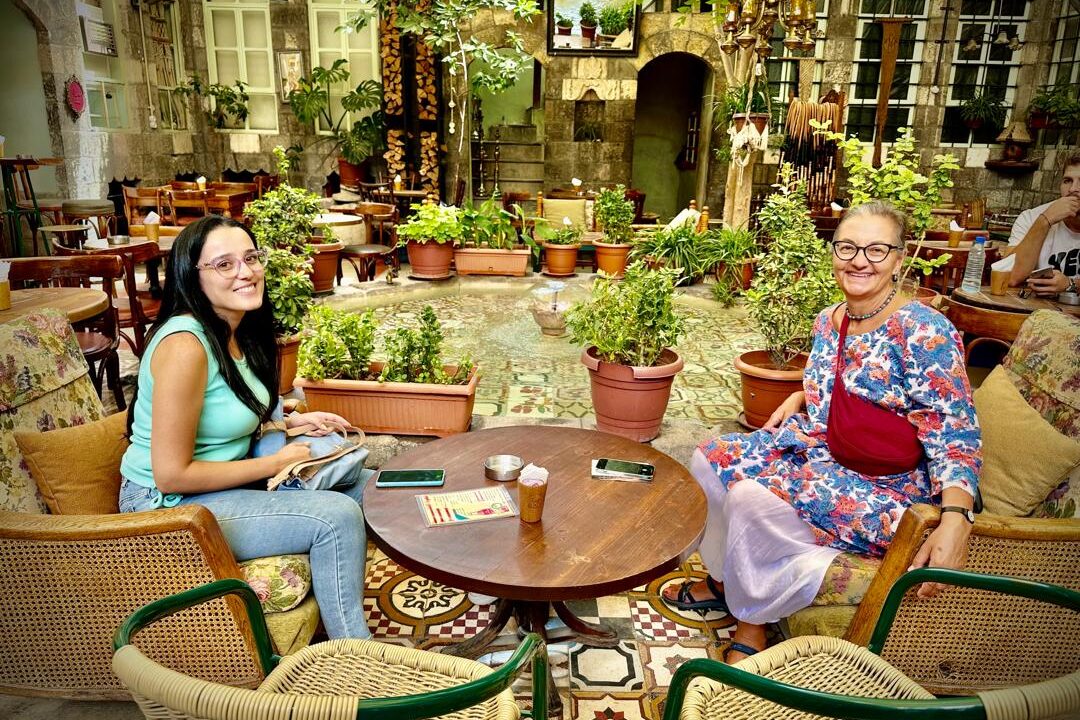As you stroll through the narrow, cobbled streets of Old Damascus, the city’s ancient spirit surrounds you. The stone walls, weathered by centuries, seem to hum with untold stories, while the sweet scent of jasmine fills the air, inviting you deeper into its embrace. Suddenly, your eyes fall on a door—old, slightly faded, and almost hidden among the buildings. It looks like something out of a story, with a charm that draws you in. You push it open, and as you step inside, you’re not just entering a café. You’re stepping into a living piece of history, where every corner tells a tale, and the past is as alive as the present. Welcome to Qishla Café—where history lives, and coffee is only part of the story.
A Childhood Dream, Brewed Slowly
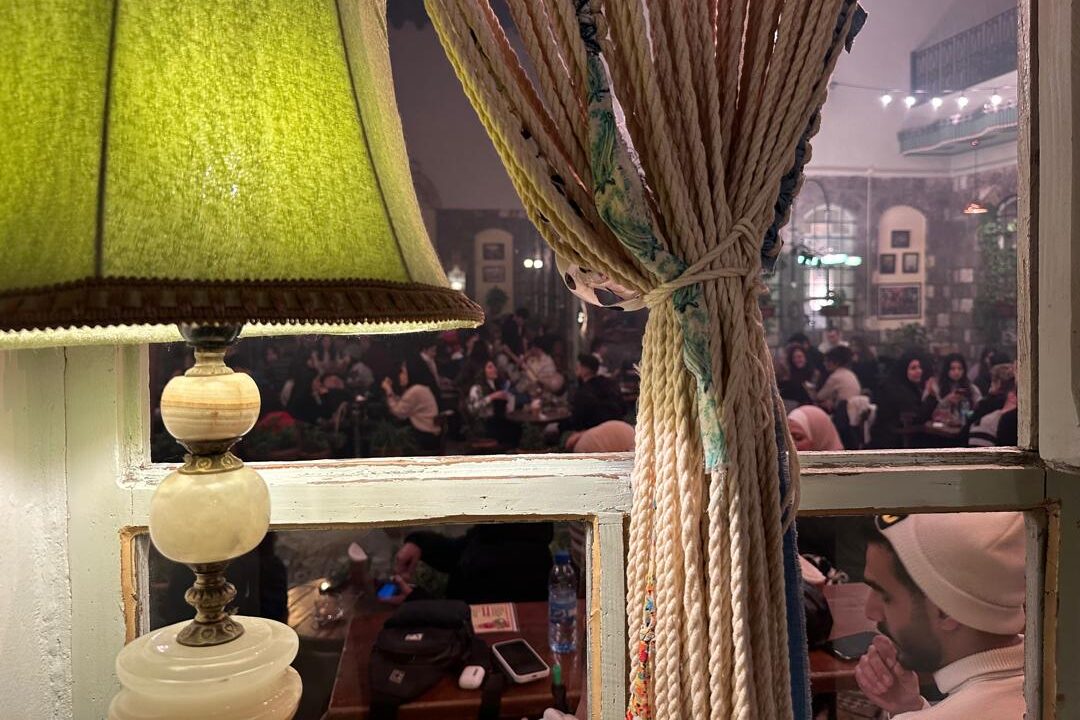
Somer Hazim grew up walking through the winding alleys of Damascus on his way to school. Each day, he passed by beautiful old houses—homes with inner courtyards, stone fountains, colorful tiles, and sunshine pouring in from open skies above. Like many Damascenes, he fell in love with this unique architecture. But unlike most, he decided one day: “I want to live in one of these.”
Years later, after a long search and a lot of dreaming, Somer finally bought an old house tucked away in the Jewish Quarter of Old Damascus. It was built around 1870 and once belonged to two well-known families—first the Zayyats, then the Khalils. Over time, it had been rented to several rural families and was worn down and covered in mismatched changes.
But Somer and his brother Anmar, an architect, saw more than just cracked walls. They saw potential. They saw a story waiting to be told again.
The Makeover: Turning Dust into Gold
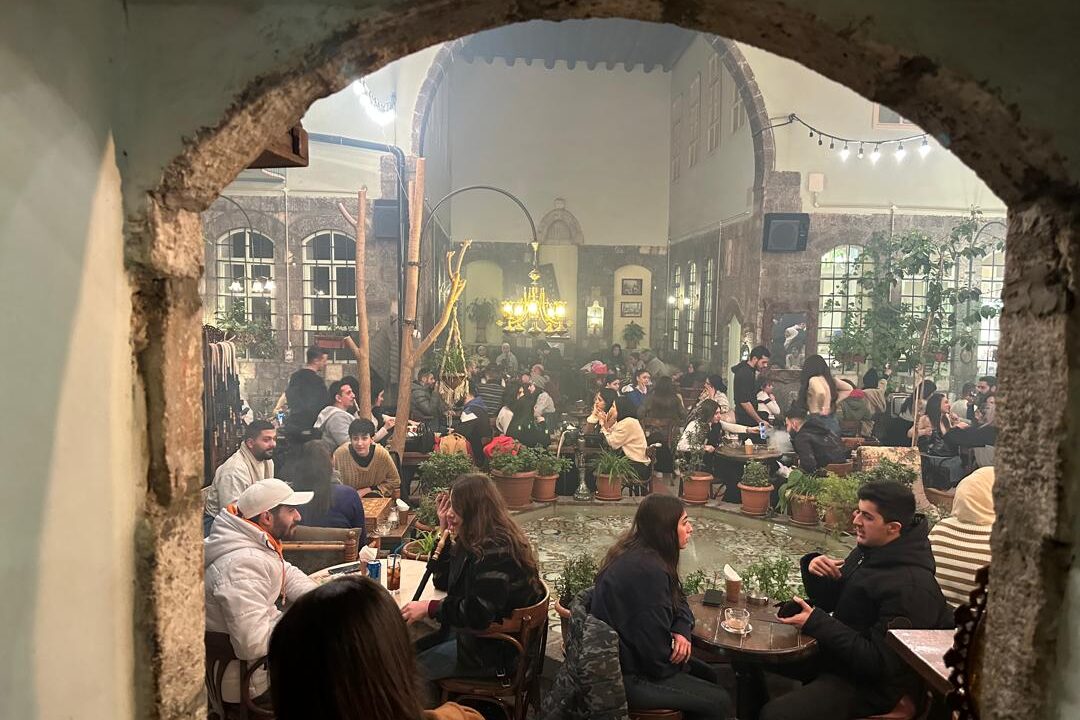
Restoring the house was no easy task. Imagine peeling away decades of patchwork additions to find the original beauty underneath. That’s exactly what the Hazim brothers did.
They used old maps, like the cadastral plans from the Ottoman era, and books like Hidden Treasures of Old Damascus by Brigid Keenan. They tracked down tiles that matched the original floors, stones that looked like they belonged in the 19th century, and used techniques that mirrored those of old Damascene craftsmen.
The house slowly returned to life—arches reappeared, fountains were restored, and traditional wooden windows called mandaloneh were rebuilt. Even the electricity wires were redone to look like they belonged in the early 1900s!
They could have turned it into a boutique hotel, as many others have done. But after the war, priorities changed. They wanted to create a space for people. A gathering place. Something more casual, more open. So they opened a café.
Not Just a Café—A Cultural Time Machine
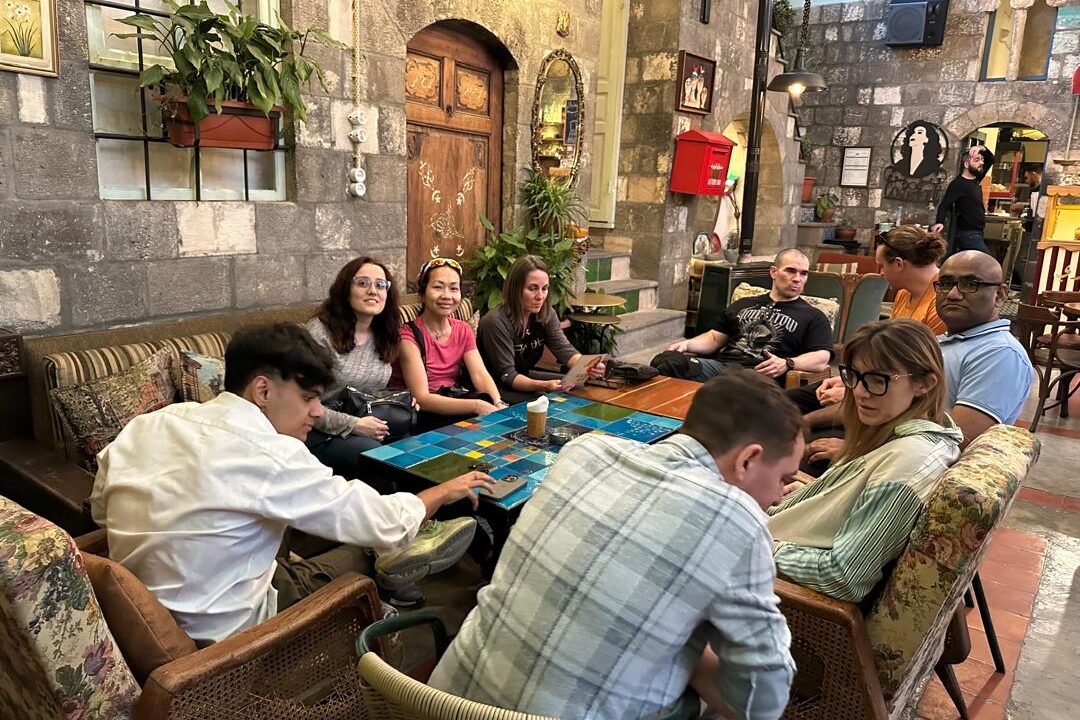
Qishla Café isn’t your average coffee shop. It’s part living room, part art gallery, and part museum. The main hall, courtyard, and side rooms all keep the original charm of an old Damascene home. But there are also modern touches: warm lighting, a cozy buffet corner, and seating that’s welcoming for everyone—from teenagers hanging out to travelers on a cultural journey.
What makes it really unique is its role as an art space. Thanks to interior designer Rita Khoury, the café also became a mini-gallery. The main hall now hosts the work of 16 Syrian artists—paintings, handmade crafts, even experimental art. It’s not flashy. It feels homemade, like a conversation over tea with an artist friend.
Rita even chose the café’s signature color—soft green, mixed with shades of ivory and blue. It’s the same color locals used to paint their doors and windows long ago. The furniture? Old-fashioned coblan fabric covers the cushions, bringing back that nostalgic Damascene feeling.
A Place for the Present, Rooted in the Past
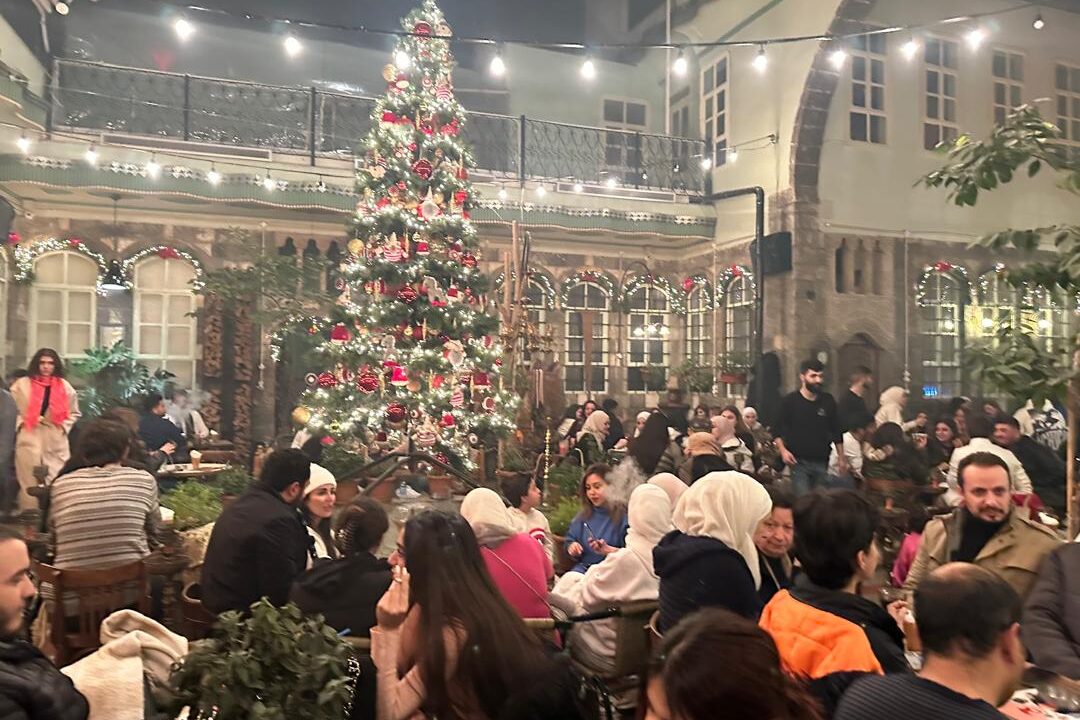
Since opening, Qishla Café has brought new energy to its quiet corner of the city. Locals stop by for a chat, tourists stumble upon it and stay longer than planned, and young people come for the vibes—and the Instagrammable atmosphere, of course.
It’s the kind of place where you sip tea beside a stone fountain, where the past hums softly in the background, and where the city of Damascus gently invites you to slow down.
So next time you’re in Old Damascus, don’t just look for the big tourist spots. Take a turn down a small alley. Look for that green door. Behind it, you might find Qishla Café—and maybe a little piece of your own story waiting to begin.
